a place for my original homebrew content as well as DnD/ttrpg tips and tricks
Don't wanna be here? Send us removal request.
Text
Pre-Made Fantasy Maps

I've started to really enjoy the process of making DnD maps so I thought, why not make a few random ones and offer them to people who want to make their own fantasy world but don't have a map to do so?
It's a great base to start on. I have the digital files for sale on Etsy, currently, and you're welcome to add cities, names, whatever you like once it's yours!
I'd also be down to make custom maps for people, too, if anyone ends up being interested!
10 notes
·
View notes
Text
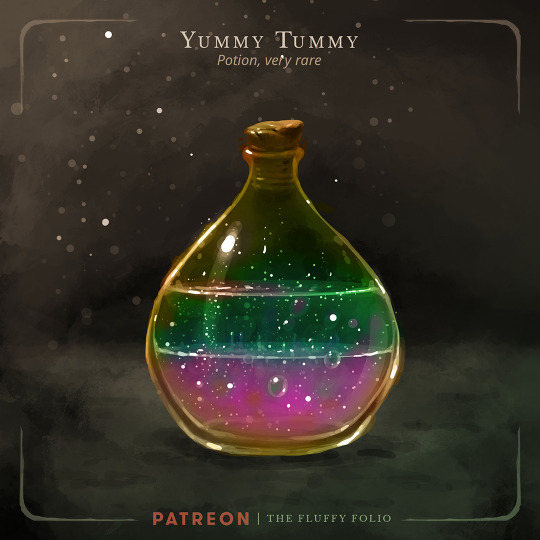
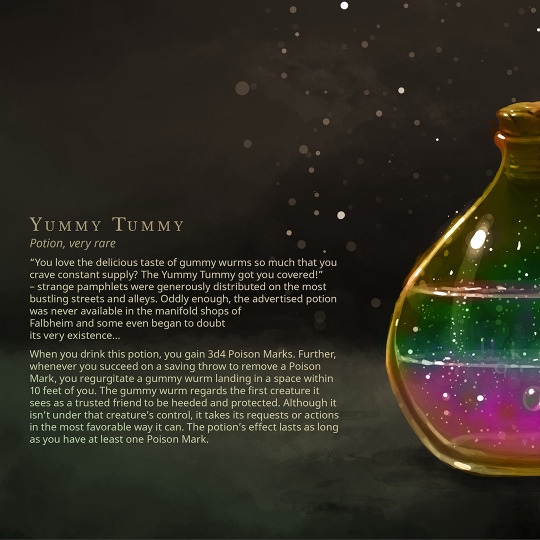
Yummy Tummy – Potion, very rare
“You love the delicious taste of gummy wurms so much that you crave constant supply? The Yummy Tummy got you covered!” – strange pamphlets were generously distributed on the most bustling streets and alleys. Oddly enough, the advertised potion was never available in the manifold shops of Falbheim and some even began to doubt its very existence…
🔮 If you like my work, kindly consider to support me on Patreon to gain access to monster pages, tokens & artwork of over 300 quirky creatures as well as dozens of potion & item cards based on their lore.
127 notes
·
View notes
Text
reminder to worldbuilders: don't get caught up in things that aren't important to the story you're writing, like plot and characters! instead, try to focus on what readers actually care about: detailed plate tectonics
138K notes
·
View notes
Text
Another worldbuilding application of the "two layer rule": To create a culture while avoiding The Planet Of Hats (the thing where a people only have one thing going for them, like "everyone wears a silly hat"): You only need two hats.
Try picking two random flat culture ideas and combine them, see how they interact. Let's say taking the Proud Warrior Race - people who are all about glory in battle and feats of strength, whose songs and ballads are about heroes in battle and whose education consists of combat and military tactics. Throw in another element: Living in diaspora. Suddenly you've got a whole more interesting dynamic going on - how did a people like this end up cast out of their old native land? How do they feel about it? How do they make a living now - as guards, mercenaries? How do their non-combatants live? Were they always warrior people, or did they become fighters out of necessity to fend for themselves in the lands of strangers? How do the peoples of these lands regard them?
Like I'm not shitting, it's literally that easy. You can avoid writing an one-dimensional culture just by adding another equally flat element, and the third dimension appears on its own just like that. And while one of the features can be location/climate, you can also combine two of those with each other.
Let's take a pretty standard Fantasy Race Biome: The forest people. Their job is the forest. They live there, hunt there, forage there, they have an obnoxious amount of sayings that somehow refer to trees, woods, or forests. Very high chance of being elves. And then a second common stock Fantasy Biome People: The Grim Cold North. Everything is bleak and grim up there. People are hardy and harsh, "frostbite because the climate hates you" and "being stabbed because your neighbour hates you" are the most common causes of death. People are either completely humourless or have a horrifyingly dark, morbid sense of humour. They might find it funny that you genuinely can't tell which one.
Now combine them: Grim Cold Bleak Forest People. The summer lasts about 15 minutes and these people know every single type of berry, mushroom and herb that's edible in any fathomable way. You're not sure if they're joking about occasionally resorting to eating tree bark to survive the long dark winter. Not a warrior people, but very skilled in disappearing into the forest and picking off would-be invaders one by one. Once they fuck off into the woods you won't find them unless they want to be found.
You know, Finland.
27K notes
·
View notes
Photo

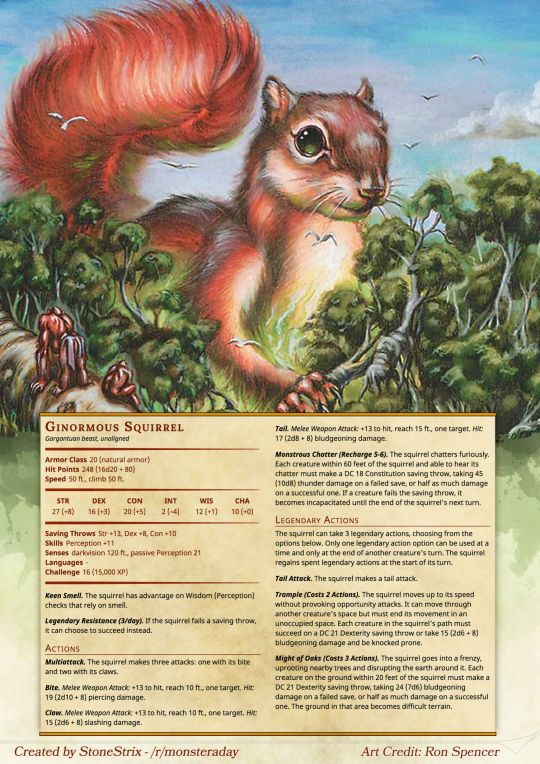
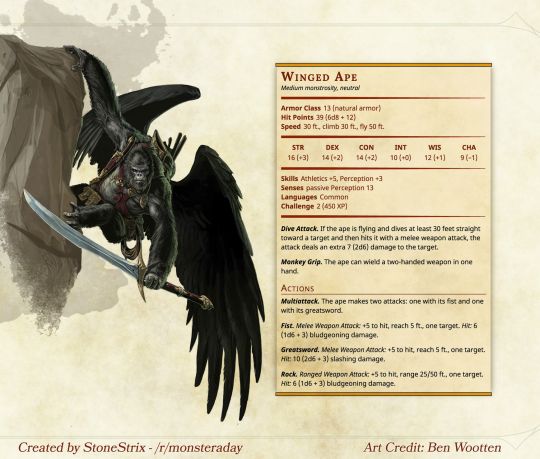

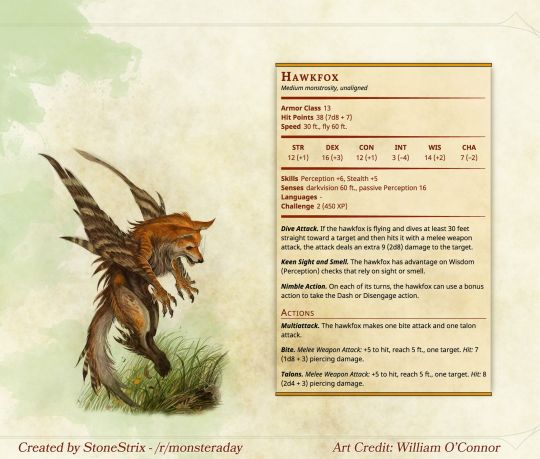



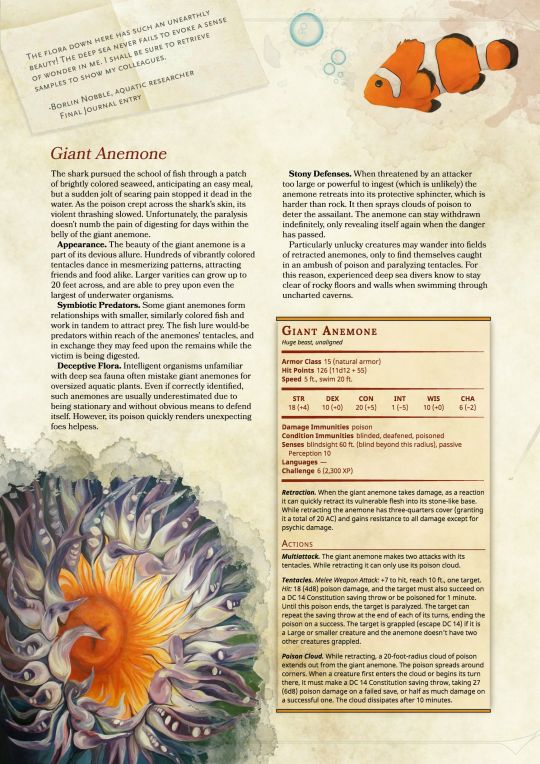
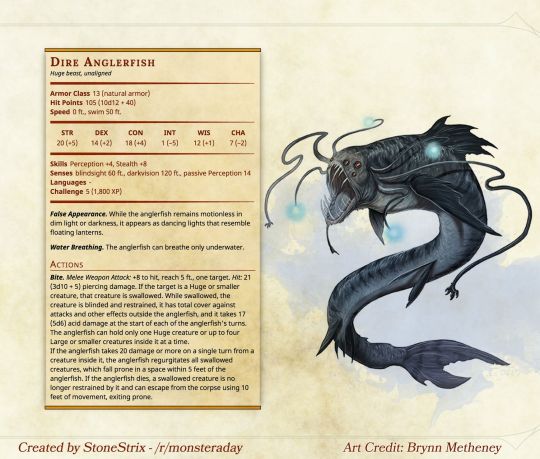
Monsters by Stonestrix
1K notes
·
View notes
Text




questionable creatures for my worldbuilding.
Gourbus Stag - a rare forest creature. Smart enough to use magic.
Moosepelheim - a giant fuck you moose. will kill each other in mating rituals. antlers on fire sometimes.
Unicorn - wild horse esque thing. They will gore and eat any attackers.
Entaryion - small unassuming vulture creature bred with a peryton. Made a fierce ridable war steed.
109 notes
·
View notes
Text
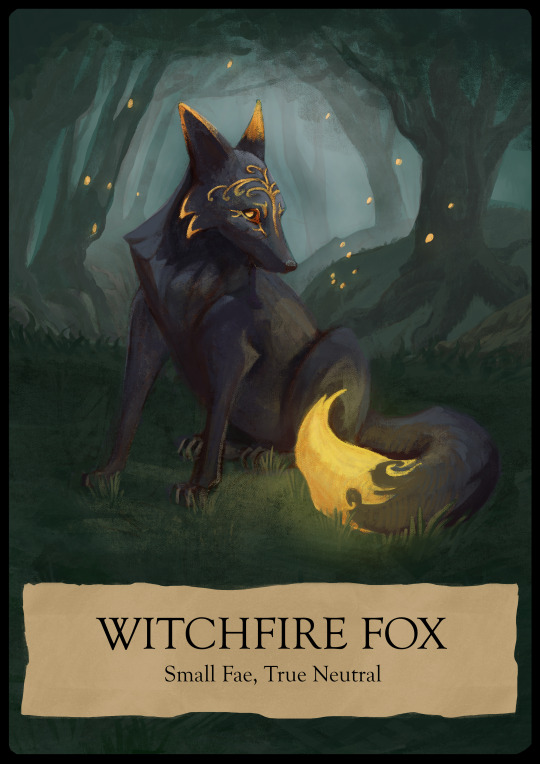
Native to the feywild, Witchfire Foxes are equally likely to lead travelers to safety or their demise. But you're hopelessly lost, and the forest is dark and cold. What choice do you have but to follow the glowing tail down the winding path before you?
26 notes
·
View notes
Text


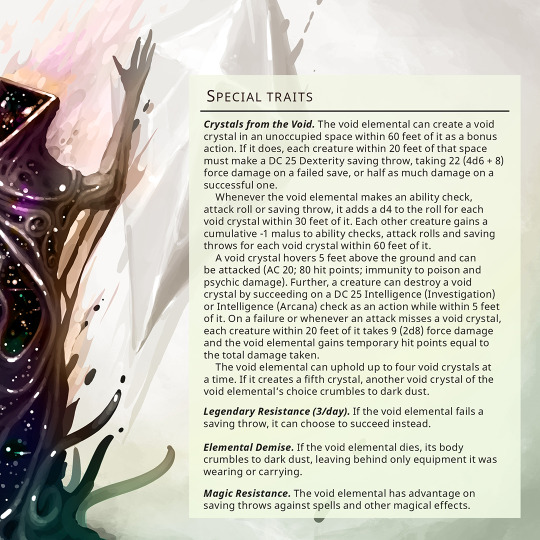
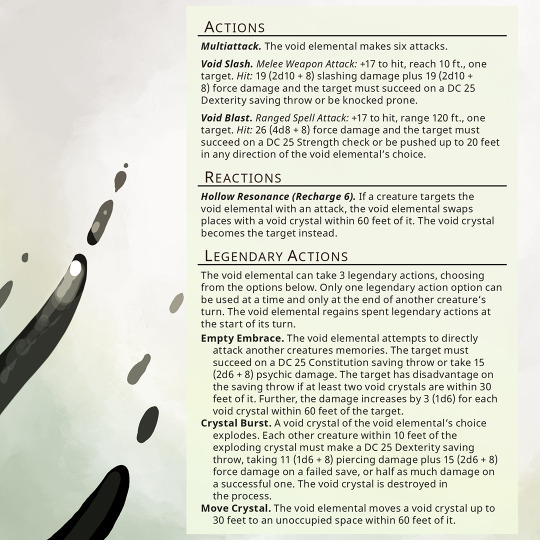
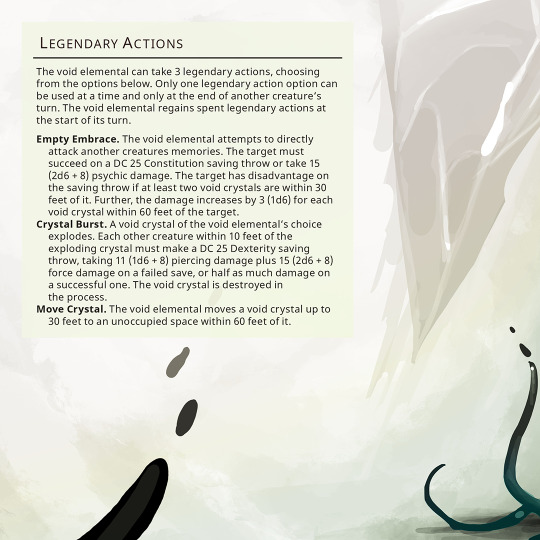
Void Elemental – Medium elemental, chaotic evil
A vile disturbance in the currents of matter, a fissure in the vessel of time. In a split second of inattention, the void elemental was created and creation itself quickly learned to fear its existence. The void elemental is an arch enemy of everyone and anything alike – a planet-devouring hunger fuels its ever-changing fabric, its sheer presence nullifies life wherever it roams. Only a few dared to oppose its hollowing reign and those who did were absorbed by the very same emptiness, this eldritch being escaped from.
🔮 If you like my work, kindly consider to support me on Patreon to gain access to monster pages, tokens & artwork of over 250 quirky creatures as well as dozens of potion & item cards based on their lore.
635 notes
·
View notes
Text

This came across my Facebook feed, felt I’d share it.
50K notes
·
View notes
Text
Rolls to Alarm Your Players
Want to spice the game up? Why not try alarming your players for no real reason? Make sure to make a show out of counting the dice before you roll.

31K notes
·
View notes
Photo

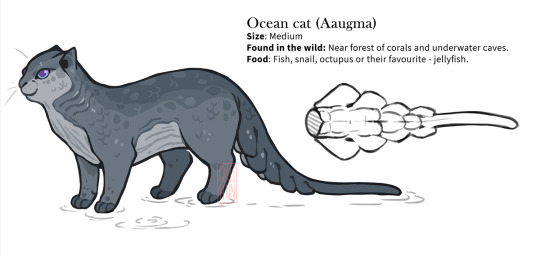

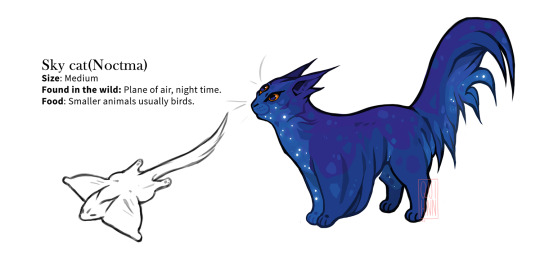


Various cats around the world ❤
19K notes
·
View notes
Text
Fantasy Guide to Royal Guards

Royals have multiple layers of servants but there is no set of servants most important that their protection. Royalty are never without some kind of protection and palaces are usually guarded to the teeth. So how do we write royal security. This is for @jamie-ties-writing
Recruitment
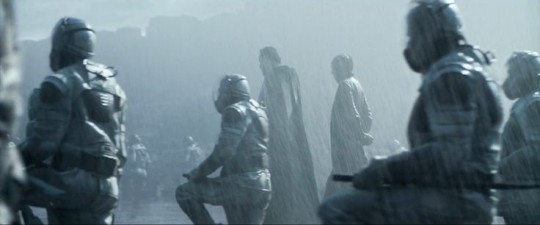
Royal guards aren't just any person plucked from the street and put into a uniform. They are usually recruited from within the royal army, from within particular regiments across the army (a mixture of calvary, naval, artillery, infantry). The Royal Guard is usually made of of multiple regiments, not just a single one. These regiments would share and rotate duties. The British Royal family are currently guarded by the Coldstream Regiment, Welsh Guards, Grenadier Guards among others. Royal guards will be selected for their skill, sometimes their birth (they may be chosen if they rank higher socially) and of course, loyalty to the Crown. Royal guards were intended to be a show of force, strength, Majesty so they were usually impressive specimens meant to instill some power to their monarch.
Duties

A royal guard's first order of business is the protection of the family. They may have sentry duty around the palace, guarding doors or patrolling palace grounds or corridors. A Royal Guard may be assigned to one member only but most likely they will rotate through the family as needed. Of course, a royal can request a guard to always be assigned to them if they want. They may escort their charge of the day to their engagements. If assigned a certain royal to protect, they would tail them throughout the day. A royal guard may even perform ceremonial duties such as the changing of the guard or riding in coronations or state funerals. A royal guard is expected to remain vigilant but never speak of what they see, they are meant to keep an ear out for threats but never repeat whatever is said, they are expected at all times to uphold a professional countenance and respect protocol. They will be expected to give their lives if needed, and be loyal to the last.
Rank
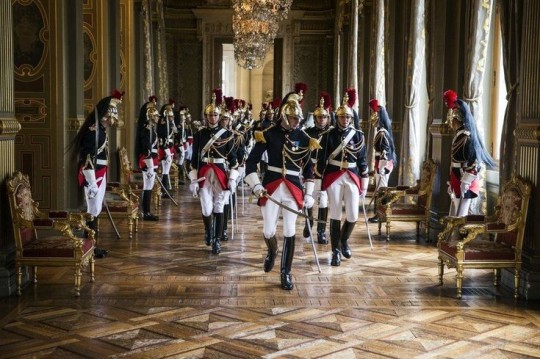
Royal guards are a military division and rank is a part of their lives. Their supreme commander would he the monarch first but there would be an appointed commander. Depending on how you want to write Royal Guards, each regiment would have it's own captain and leaders. Of course, not all regiments may adhere to the same ranks but this would be a basic outline for you to follow.
Colonel: Colonels actually have no duties, they are more an honourary figurehead. Many members of the royal family would have a regiment to be colonel of. This usually requires nothing more than a ceremonial role, the wearing of the uniform while inspecting the troops for example.
Captain: The Commander of the regiment. They would undertake managerial duties, issuing commands from the monarch, assigning duties, approving the induction of new guards into the Household Division. The Captain would decide who would guard which member of the royal family.
Lieutenant: The Second in command. They will assume command if the Captain is not available. They would take on a large portion of duties and aid the Captain.
Sergeant: The sergeant would be next in command.
Guardsman: The lowest rank. They will have the least experience but usually the most duties. They would be the ones patrolling and standing sentry.
Uniform

Of course, no royal guard is complete without their uniform. Royal guards would have to stand out, especially in ceremonial duties. This uniform would be distinctive, not only because it is a great honour for anybody to be named to the guard but also as mentioned above, to add a layer of might to those they protect.
Notable Royal Guard Units

Dahomey Mino (the inspiration of Black Panther's Dora Milaje)
The Praetorian Guard
The Imperial Guard of Napoleon
The Imperial German Bodyguard
Varangian Guard
Swiss Guards
The Kheshig
The Janissary
The Imperial Guards of Tsarist Russia
The Cossack Guard
Guardia Real
Coldstream Guards
Irish Guards
Welsh Guards
Grenadier Guards
Medjay of Ancient Egypt
Al-Ḥars al-Malakī as-Suʿūdī
Compagnie des Carabiniers du Prince
Thahan Raksa Phra Ong
2K notes
·
View notes
Text

This all started (my homebrew journey) because of this guy and one other guy lol. My friend has a podcast and we all decided to bring one homebrew creation to the table and now I'm many homebrew deep.
Anyway, this is inspired by Fallen Angels and their desire to return to heaven, with some options for what your Fallen Angel patron might be like/what their motives might be!
(art source)
#dnd warlock#dnd patron#dnd homebrew#dnd 5e#dungeons and dragons#ttrpg#5e homebrew#warlock subclass#warlock homebrew#fallen angels
67 notes
·
View notes
Text
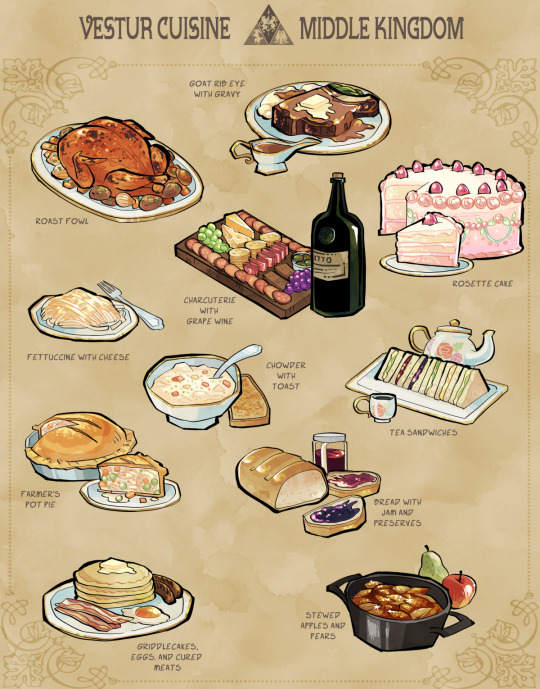


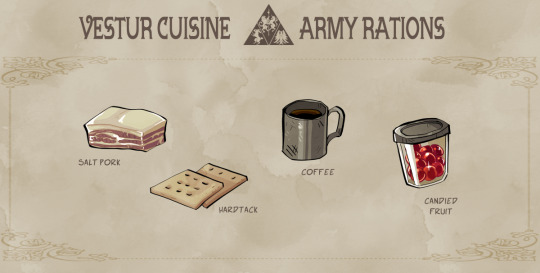
Foods of Vestur
@broncoburro and @chocodile provoked me into doing some illustrated worldbuilding for Forever Gold ( @forevergoldgame ), an endeavor I was happy to undertake. Unbeknownst to me, it would take the better part of a week to draw.
In the process, I conjured about an essay's worth of fantasy food worldbuilding, but I'm going to try and keep things digestible (pardon my pun). Lore under the cut:
The Middle Kingdom
The Middle Kingdom has ample land, and its soil, landscapes, and temperate climate are amenable to growing a variety of crops and raising large quantities of livestock. The Midland palate prefers fresh ingredients with minimal seasoning; if a dish requires a strong taste, a cook is more likely to reach for a sharp cheese than they are to open their spice drawer. Detractors of Middle Kingdom cuisine describe it as bland, but its flavor relies on the quality of its components more than anything.
KEY CROPS: wheat, potatoes, carrots, green beans, apples, pears, and grapes KEY LIVESTOCK: Midland goats, fowl, and hogs
ROAST FOWL: Cheap and easy to raise, fowl is eaten all over Vestur and by all classes. Roasted whole birds are common throughout, but the Middle Kingdom's approach to preparation is notable for their squeamish insistence on removing the head and neck before roasting, even among poorer families. Fowl is usually roasted on a bed of root vegetables and shallots and served alongside gravy and green beans.
GOAT RIBEYE: Vestur does not have cattle – instead it has a widely diversified array of goats, the most prominent being the Middle Kingdom's own Midland goat. The Midland goat is a huge caprid that fills the same niche as cattle, supplying Vestur with meat and dairy products. Chevon from the Midland goat is tender with a texture much like beef, though it retains a gamier, “goat-ier” taste. It is largely eaten by the wealthy, though the tougher and cheaper cuts can be found in the kitchens of the working class. Either way, it is almost always served with gravy. (You may be sensing a pattern already here. Midlanders love their gravy.)
FETTUCCINE WITH CHEESE: Noodles were brought to the Middle Kingdom through trade with the South and gained popularity as a novel alternative to bread. The pasta of Midland Vestur is largely eaten with butter or cream sauce; tomato or pesto sauces are seldom seen.
CHARCUTERIE WITH WINE: Charcuterie is eaten for the joy of flavors rather than to satiate hunger, and therefore it is mainly eaten by the upper class. It is commonly eaten alongside grape wine, a prestigious alcohol uniquely produced by the Middle Kingdom. The flavor of grape wine is said to be more agreeable than the other wines in Vestur, though Southern pineapple wine has its share of defenders.
BREAD WITH JAM AND PRESERVES, TEA SANDWICHES, & ROSETTE CAKE: Breads and pastries are big in the Middle Kingdom. The Middle Kingdom considers itself the world leader in the art of baking. Compared to its neighbors, the baked goods they make are soft, light, and airy and they are proud of it. Cakes in particular are a point of ego and a minor source of mania among nobility; it is a well-established cultural joke that a Middle Kingdom noble cannot suffer his neighbor serving a bigger, taller cake. The cakes at Middle Kingdom parties can reach nauseatingly wasteful and absurdist heights, and there is no sign of this trend relenting any time soon.
CHOWDER, FARMER'S POT PIE, GRIDDLECAKES, EGGS, CURED MEATS: If you have the means to eat at all in the Middle Kingdom, you are probably eating well. Due to the Midland's agricultural strength, even peasant dishes are dense and filling. Eggs and cured meats are abundant, cheaper, and more shelf stable than fresh cuts and provide reprieve from the unending wheat and dairy in the Midland diet.
STEWED APPLES AND PEARS, JAM AND PRESERVES: The Midland grows a number of different fruits, with apples and pears being the most plentiful. In a good year, there will be more fruit than anyone knows what to do with, and so jams and preserves are widely available. Stewed fruit has also gained popularity, especially since trade with the Southern Kingdom ensures a stable supply of sugar and cinnamon.
NORTHERN KINGDOM - SETTLED
The Northern Kingdom is a harsh and unforgiving land. Historically, its peoples lived a nomadic life, but since the unification of the Tri-Kingdom more and more of the Northern population have opted to live a settled life. The “settled North” leads a hard life trying to make agriculture work on the tundra, but it is possible with the help of green meur. The Northern palate leans heavily on preserved and fermented foods as well as the heat from the native tundra peppers. Outsiders often have a hard time stomaching the salt, tang, and spice of Northern cuisine and it is widely considered “scary.”
KEY CROPS: potatoes, beets, carrots, tundra pepper KEY LIVESTOCK: wooly goats, hares*
GOAT POT ROAST: Life up north is hard work and there is much to be done in a day. Thus, slow cooked one-pot meals that simmer throughout the day are quite common.
VENISON WITH PICKLES: Game meat appears in Northern dishes about as much as farmed meat – or sometimes even more, depending on the location. Even “classier” Northern dishes will sometimes choose game meat over domesticated, as is the case with the beloved venison with pickles. Cuts of brined venison are spread over a bed of butter-fried potato slices and potent, spicy pickled peppers and onions. The potatoes are meant to cut some of the saltiness of the dish, but... most foreigners just say it tastes like salt, vinegar, and burning.
MINER STEW: While outsiders often have a hard time distinguishing miner stew from the multitude of beet-tinged stews and pot roasts, the taste difference is unmistakable. Miner's stew is a poverty meal consisting of pickles and salt pork and whatever else is might be edible and available. The end result is a sad bowl of scraps that tastes like salt and reeks of vinegar. The popular myth is that the dish got its name because the Northern poor began putting actual rocks in it to fill out the meal, which... probably never happened, but facts aren't going to stop people from repeating punchy myths.
RYE TOAST WITH ONION JAM: Rye is hardier than wheat, and so rye bread is the most common variety in the North. Compared to Midland bread, Northern bread is dense and gritty. It is less likely to be enjoyed on its own than Midland bread, both because of its composition and because there's less to put on it. Unless you've the money to import fruit spreads from further south, you're stuck with Northern jams such as onion or pepper jam. Both have their appreciators, but bear little resemblance to the fruit and berry preserves available elsewhere in Vestur.
HARE DAIRY: Eating hare meat is prohibited in polite society due to its association with the haretouched and heretical nomadic folk religions, but hare dairy is fair game. Hare cheese ranges from black to plum in color, is strangely odorless, and has a pungent flavor akin to a strong blue cheese. It is the least contentious of hare milk products. Hare milk, on the other hand, is mildly toxic. If one is not acclimated to hare milk, drinking it will likely make them “milk sick” and induce vomiting. It is rarely drunk raw, and is instead fermented into an alcoholic drink similar to kumis.
MAPLE HARES AND NOMAD CANDY: Maple syrup is essentially the only local sweetener available in the North, and so it is the primary flavor of every Northern dessert. Simple maple candies are the most common type of sweet, though candied tundra peppers – known as “nomad candy” – is quite popular as well. (Despite its name, nomad candy is an invention of the settled North and was never made by nomads.)
TUNSUKH: Tunsukh is one of the few traditions from the nomadic era still widely (and openly) practiced among Northern nobility. It is a ceremonial dinner meant as a test of strength and endurance between political leaders: a brutally spiced multi-course meal, with each course being more painful than the last. Whoever finishes the dinner with a stoic, tear-streaked face triumphs; anyone who cries out in pain or reaches for a glass of milk admits defeat. “Dessert” consists of a bowl of plain, boiled potatoes. After the onslaught of tunsukh, it is sweeter than any cake.
NORTHERN KINGDOM – NOMADIC NORTH
Although the Old Ways are in decline, the nomadic clans still live in the far North beyond any land worth settling. They travel on hareback across the frozen wasteland seeking “meur fonts” - paradoxical bursts of meur that erupt from the ice and provide momentary reprieve from the harsh environment. The taste of nomad food is not well documented.
KEY CROPS: N/A KEY LIVESTOCK: hares
PEMMICAN: Nomadic life offers few guarantees. With its caloric density and functionally indefinite “shelf life,” pemmican is about as close as one can get.
SEAL, MOOSE: Meat comprises the vast majority of the nomadic diet and is eaten a variety of ways. Depending on the clan, season, and availability of meur fonts, meat may be cooked, smoked, turned to jerky, or eaten raw. Moose and seal are the most common sources of meat, but each comes with its own challenges. Moose are massive, violent creatures and dangerous to take down even with the aid of hares; seals are slippery to hunt and only live along the coasts.
WANDER FOOD, WANDER STEW: When a green meur font appears, a lush jungle springs forth around it. The heat from red meur fonts may melt ice and create opportunities for fishing where there weren't before. Any food obtained from a font is known as “wander food.” Wander food is both familiar and alien; the nomads have lived by fonts long enough to know what is edible and what is not, but they may not know the common names or preparation methods for the food they find. Fish is simple enough to cook, but produce is less predictable. Meur fonts are temporary, and it's not guaranteed that you'll ever find the same produce twice - there is little room to experiment and learn. As a result, a lot of wander food is simply thrown into a pot and boiled into “wander stew,” an indescribable dish which is different each time.
CENVAVESH: When a haretouched person dies, their hare is gripped with the insatiable compulsion to eat its former companion... therefore, it is only proper to return the favor. Barring injury or illness, a bonded hare will almost always outlive its bonded human, and so the death of one's hare is considered a great tragedy among nomads. The haretouched – and anyone they may invite to join them – sits beside the head of their hare as they consume as much of its rib and organ meat as they can. Meanwhile, the rest of the clan processes the remainder of the hare's carcass so that none of it goes to waste. It is a somber affair that is treated with the same gravity as the passing of a human. Cenvavesh is outlawed as a pagan practice in the settled North.
HARE WINE: While fermented hare's milk is already alcoholic, further fermentation turns it into a vivid hallucinogen. This “hare wine” is used in a number of nomad rituals, most notably during coming of age ceremonies. Allegedly, it bestows its drinker with a hare's intuition and keen sense of direction... of course, truth is difficult to distinguish from fiction when it comes to the Old Ways.
SOUTHERN KINGDOM
The Southern Kingdom is mainly comprised of coast, wetland, and ever-shrinking jungle. While the land is mostly unfit for large-scale agriculture, seafood is plentiful and the hot climate is perfect for exorbitant niche crops. What they can't grow, they obtain easily through trade. Southerners have a reputation for eating anything, as well as stealing dishes from other cultures and “ruining” them with their own interpretations. KEY CROPS: plantains, sweet potato, pineapple, mango, guava, sugarcane KEY LIVESTOCK: fowl, marsh hogs, seals
GLAZED EEL WITH FRIED PLANTAINS: A very common configuration for Southern food is a glazed meat paired with a fried vegetable. It almost doesn't matter which meat and which vegetable it is – they love their fried food and they love their sweet and salty sauces in the South. Eel is a culturally beloved meat, much to the shock and confusion of visiting Midlanders.
NARWHAL STEW: Narwhal stew is the South's “anything goes” stew. It does not actually contain narwhal meat, as they are extinct (though the upper class may include dolphin meat as a protein) – instead, the name comes from its traditional status as a “forever soup,” as narwhals are associated with the passage of time in Southern culture. Even in the present day, Southern monasteries tend massive, ever-boiling pots of perpetual stew in order to feed the monks and sybils who live there. Narwhal stew has a clear kelp-based broth and usually contains shellfish. Beyond that, its ingredients are extremely varied. Noodles are a popular but recent addition.
FORAGE: The dish known as “forage” is likewise not foraged, or at least, it hasn't been forage-based in a good hundred years at least. Forage is a lot like poke; it's a little bit of everything thrown into a bowl. Common ingredients include fish (raw or cooked), seaweed, fried noodles, marinated egg, and small quantities of fruit.
HOT POT: Hot pot is extremely popular, across class barriers, in both the South proper and its enclave territories. This is due to its extreme flexibility - if it can be cooked in a vat of boiling broth, it will be. Crustaceans and shellfish are common choices for hot pot in the proper South, along with squid, octopus, mushrooms, and greens.
FLATBREAD: The Southern Kingdom doesn't do much baking. The vast majority of breads are fried, unleavened flatbreads, which are usually eaten alongside soups or as wraps. Wraps come in both savory and sweet varieties; savory wraps are usually stuffed with shredded pork and greens while sweet wraps – which are much more expensive – are filled with fruit and seal cheese.
GRILLED SKEWERS, ROAST SWEET POTATO: While a novel concept for Midlanders and Northerners, street food has long been a part of Southern Kingdom culture. You would be hard pressed to find a Southern market that didn't have at least three vendors pushing grilled or fried something or other. Skewers are the most common and come in countless configurations, but roast sweet potatoes are a close second.
CUT FRUIT AND SEAL CHEESE: Fresh fruit is popular in the South, both local and imported. While delicious on its own, Southerners famously pair it with seal cheese. Which leads me to an important topic of discussion I don't have room for anywhere else...
THE SOUTH AND CHEESE: Since the South doesn't have much in the way of dairy farming, cheese is somewhat rare in their cuisine – but it is present. And important. Cheese is the domain of the Church. Common goat dairy imported from the Middle Kingdom is turned to cheese by monks in Southern monasteries and sold to the Southern public, yes, but as you have noticed there is another cheese prominent in the Southern Kingdom diet: seal cheese. Seal cheese is unlike anything else that has ever been called cheese; the closest it can be compared to is mascarpone. It is is a soft, creamy cheese with a mild flavor and an indulgent fat content. It is used almost exclusively as a dessert, though it is only ever mildly sweetened if at all. It is extremely costly and held in high regard; the most religious Southerners regard it as holy. Dairy seals are a very rare animal and raised exclusively in a small number of Cetolist-Cerostian monasteries, where they are tended and milked by the monks. Due to their status as a holy animal, eating seal meat is forbidden. Eating their cheese and rendering their tallow into soap is fine though.
(HEARTLAND SOUTH) SOUTH-STYLE GOAT: The Heartland South is a Southern enclave territory in the Middle Kingdom. Visiting Midland dignitaries oft wrongly assume that because the Heartland South is in Middle Kingdom territory, Heartland Southerners eat the same food they do exactly as they do. They are horrified to find that familiar sounding dishes like “goat with potatoes” are completely and utterly unrecognizable, drenched in unfamiliar sauces and spices and served alongside fruit they've never eaten. Meanwhile, Heartland Southerners firmly believe that they have fixed the Middle Kingdom's boring food.
(BOREAL SOUTH) “TUNSUKH”: If Midlanders are afraid of Heartland Southern food, Northerners are absolutely furious about cuisine from the Boreal South - the most legendarily offensive being the Boreal South's idea of “tunsukh.” Southerners are no stranger to spice, so when Southern traders began interacting with the North, they liked tunsukh! It's just... they thought it needed a little Southern help to become a real meal, you know? A side of seal cheese soothed the burn and made the meal enjoyable. And because the meal was enjoyable, the portion sizes increased. And plain boiled potatoes? Well, those are a little too plain – creamy mashed sweet potato feels like more of a dessert, doesn't it? ...For some reason, Northerners didn't agree, but that's okay. The Boreal South knows they're just embarrassed they didn't think of pairing seal cheese with tunsukh sooner.
ARMY RATIONS
The food eaten by the King's Army is about what you would expect for late 1700s military; salt pork or salt chevon, hard tack, and coffee. The biggest divergence they have is also one of Vestur's biggest points of pride: they have the means to supply their troops with frivolous luxuries like small tins of candied fruit from the Midland. A love of candied fruit is essentially a Vesturian military proto-meme; proof that they serve the greatest Tri-Kingdom on the planet. Don't get between a military man and his candied fruit unless you want a fight.
#this is going here#worldbuilding#i love like the mundane being unique#ya know what i mean#like tell me what your world is by the average breakfast
788 notes
·
View notes
Text

This rare, magical ring can add some fun chaos with a chance of success to your campaign. (And also some sprinkled in references and chances for DMs to drop fun lore info that might not have otherwise easily fit into the story!)
13 notes
·
View notes
Text

I felt like having a weather-based druid subclass made sense so here it is :3
(art source)
#dnd#druid subclass#circle of storms#5e homebrew#dnd 5e#dungeons and dragons#dnd druid#druid homebrew
12 notes
·
View notes
